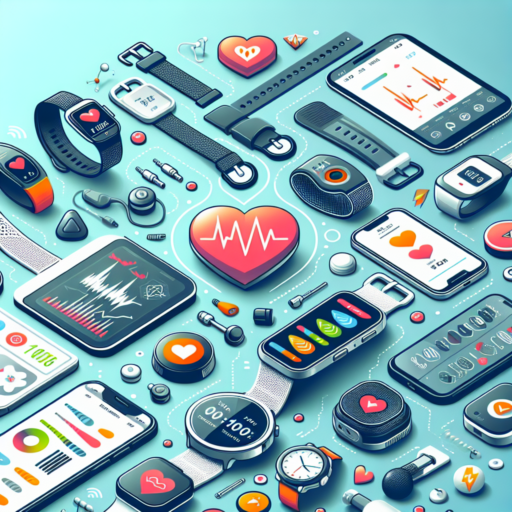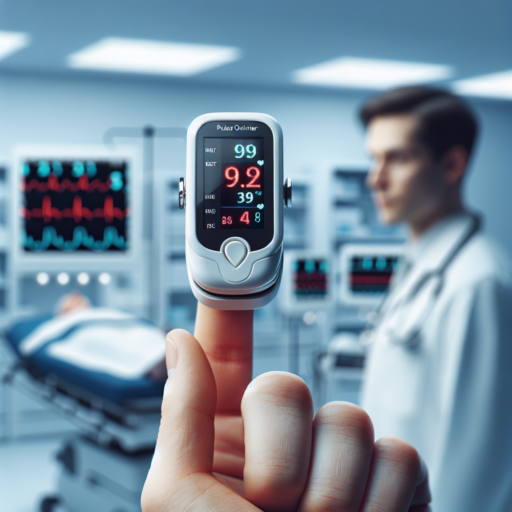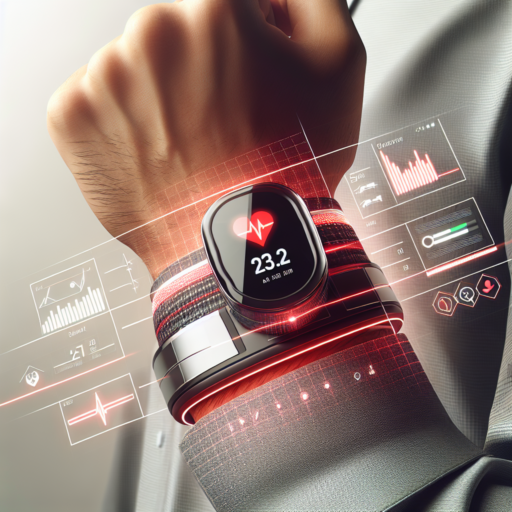Introduction to HRV Devices: Understanding the Basics
Heart Rate Variability (HRV) is an important health metric that is gaining attention for its role in monitoring stress, recovery, and overall cardiovascular fitness. HRV devices, which range from wearable technology to handheld gadgets, offer a window into the body’s nervous system function by measuring the time variation between heartbeats. Understanding the basics of these devices is crucial for leveraging their benefits in improving personal wellness.
At its core, HRV represents the physiological phenomenon where the time interval between consecutive heartbeats varies. This variability is a good thing; it indicates a healthy, responsive cardiovascular system. The higher the HRV, the better the body’s ability to adapt to stress, whether physical, emotional, or environmental. HRV devices measure these intervals using various technologies, with the most common being photoplethysmography (PPG), found in many smartwatches and fitness trackers, and electrocardiography (ECG), which provides more detailed information and is considered the gold standard for HRV measurement.
When beginning to explore HRV devices, one might encounter a range of options varying in complexity, from simple models that offer basic HRV insights to more advanced devices that provide a suite of data analysis tools for deeper health insights. The key is to identify your specific needs—whether you’re an athlete looking to optimize training and recovery, a wellness enthusiast eager to monitor stress levels, or someone interested in tracking health metrics for long-term health improvement. Understanding the basics of how these devices work and what they measure is the first step in harnessing the power of HRV technology to enhance your health and well-being.
How HRV Devices Can Transform Your Wellness Routine
In the world of wellness and personal health, Heart Rate Variability (HRV) devices are emerging as a transformative tool. This innovative technology, which measures the time interval between heartbeats, offers unprecedented insights into your body’s autonomic nervous system. By leveraging HRV data, individuals can gain a deeper understanding of their stress levels, recovery state, and overall wellbeing. This, in turn, opens up new avenues for tailoring wellness routines for improved health outcomes.
Personalizing Your Fitness Journey
One of the most significant benefits of HRV devices lies in their ability to personalize fitness goals and strategies. Unlike traditional metrics, which only scratch the surface, HRV offers a unique glimpse into your body’s responses to different stressors, be it physical exercise, mental stress, or lack of sleep. By integrating HRV readings into your wellness routine, you can optimize your workout plans and recovery periods, ensuring that you are exercising in a way that is truly aligned with your body’s needs.
Enhancing Recovery and Stress Management
HRV devices go beyond mere fitness tracking. They play a crucial role in recovery and stress management, essential components of a holistic wellness strategy. By monitoring your HRV scores, you can identify patterns and triggers that affect your stress and recovery levels. This vital data enables you to make informed decisions about when to push forward with your workouts and when to pull back and focus on recovery techniques such as meditation, yoga, or simply taking a rest day. In essence, HRV devices empower you to maintain balance, ensuring that your wellness routine supports long-term health and vitality.
The Top HRV Devices of 2023: Features and Comparisons
In the rapidly evolving landscape of health and wellness technology, Heart Rate Variability (HRV) devices have emerged as essential tools for monitoring stress, fitness, and overall well-being. As we navigate through 2023, the competition among HRV devices has intensified, with manufacturers vying to offer more precise measurements, enhanced connectivity, and a plethora of wellness features that cater to the diverse needs of consumers. This article delves into the top HRV devices of the year, highlighting their standout features and how they compare against each other in the fierce market.
Advanced Measurement Capabilities
One of the pivotal aspects that distinguish the leading HRV devices of 2023 is their advanced measurement capabilities. The ability to provide accurate HRV readings is fundamental, yet top contenders go beyond the basics. Enhanced algorithms and sensor technology allow for not only precise HRV data but also insights into sleep quality, recovery, and stress levels. Companies like Whoop and Garmin are at the forefront, offering devices that leverage these advanced technologies to give users a comprehensive overview of their health.
Integration and Connectivity
In today’s interconnected world, the capability of HRV devices to seamlessly integrate with other technology plays a vital role in their appeal. Top HRV devices of 2023 offer robust connectivity options, including Bluetooth and Wi-Fi, and are compatible with a wide range of smartphones and other smart devices. This integration extends the utility of HRV devices beyond mere data collectors, transforming them into holistic health platforms that can interface with fitness apps, nutritional tracking, and even mental health resources. The likes of BioStrap and Fitbit exemplify this trend, ensuring that their devices are not just isolated gadgets but integral parts of a connected health ecosystem.
No se han encontrado productos.
Setting Up Your HRV Device: A Step-by-Step Guide
Setting up your HRV (Heart Rate Variability) device correctly is crucial to obtaining accurate readings that can help you monitor your well-being and fitness levels. The process, while straightforward, involves specific steps to ensure you’re fully benefiting from your device’s capabilities. By following a thorough step-by-step guide, you’ll be ready to incorporate HRV tracking into your daily regime, unlocking insights into your body’s stress levels and recovery status.
Step 1: Unboxing and Charging Your Device
Begin by carefully unboxing your HRV device, ensuring all components are present according to the included checklist. Before you proceed with its setup, it’s essential to charge your device fully. A complete charge provides a solid foundation for consistent usage, particularly important for devices that track HRV and other health metrics 24/7. Connect your device to the charging unit and wait until the battery indicator signifies a full charge. This initial step might seem simple, but it sets the stage for a hassle-free HRV tracking experience.
Step 2: Downloading the Companion App
Almost every HRV device comes with a companion app designed to read and interpret the data your device collects. After your device is charged, visit the App Store or Google Play Store, depending on your smartphone’s operating system, and download the appropriate application. Make sure your smartphone’s Bluetooth is enabled to allow for a seamless pairing process. This step is critical, as the app not only stores your data but also provides insights and recommendations based on your HRV readings.
After the initial setup, familiarizing yourself with the various features and settings of your HRV device and its companion app is beneficial. Understanding how to navigate through the app and customize your device’s settings to suit your personal preferences and health goals is key to leveraging HRV technology to its fullest potential. With these steps completed, you’re well on your way to integrating heart rate variability tracking into your health and wellness routine.
Interpreting Your HRV Data for Better Health Insights
Understanding your Heart Rate Variability (HRV) can be a game-changer in monitoring and improving your overall health. HRV measures the variation in time between each heartbeat, and it’s an indicator of your body’s ability to adapt to stress, exercise, and even disease. Learning to interpret this data can help you tailor your lifestyle for better health outcomes.
The first step in interpreting your HRV data is recognizing the baseline of your own HRV scores. Since HRV can significantly vary from person to person, knowing your average readings is crucial. High HRV is generally associated with good health and a strong heart, indicating high adaptability and resilience to stress. On the other hand, a lower HRV suggests a potential need for rest and recovery, highlighting the body’s strained response to stressors.
Key Factors That Influence Your HRV
- Physical Activity: Regular exercise tends to increase HRV over time, indicating a healthy and adaptive heart. However, overtraining can lead to a temporary decrease in HRV, signaling the need for recovery.
- Stress: Both physical and emotional stress can lower HRV, showcasing the body’s response to stress and its need for recovery strategies like meditation or deep breathing exercises.
- Sleep Quality: Good sleep hygiene is essential for a high HRV score. Quality sleep helps in recovery and maintains a healthy balance in the nervous system.
By tracking and understanding these influential factors, you can start making more informed decisions about your daily habits and their impacts on your HR1000V. Whether it’s adjusting your exercise routine, managing stress, or improving your sleep patterns, interpreting your HRV data offers personalized insights that can lead to a healthier lifestyle.
HRV Devices and Fitness: Improving Your Physical Performance
Understanding the connection between HRV (Heart Rate Variability) devices and fitness can unlock a new level of insight into your workout regimen and overall physical performance. HRV measures the time variation between heartbeats, which is not only an indicator of your heart health but also an in-depth reflection of your body’s response to stress and recovery. Integrating HRV tracking into your fitness routine provides a nuanced view of how well your body recuperates after exercises and adjusts to training load over time.
One of the critical benefits of utilizing HRV technology in fitness is its ability to personalize your training plans. By monitoring daily HRV scores, individuals can gauge their body’s readiness for strenuous activity or understand when it’s time to prioritize recovery. This data-driven approach ensures your training intensity aligns with your body’s current capacity, reducing the risk of overtraining and injury while maximizing the effectiveness of your workouts.
Moreover, HRV devices and apps offer actionable insights that can guide you in enhancing various aspects of your fitness. Whether it’s identifying the need for better sleep, managing stress levels, or optimizing workout and recovery periods, HRV data plays a pivotal role. By attending to these insights, individuals can implement small but significant lifestyle adjustments that contribute to improved physical performance and overall well-being.
Combining HRV Devices and Sleep Tracking for Maximum Benefits
Integrating Heart Rate Variability (HRV) devices with sleep tracking technologies is a cutting-edge approach that promises enhanced health insights, particularly in understanding and improving sleep quality. HRV, a measure of variations in time between heartbeats, serves as an excellent marker of autonomic nervous system function and, by extension, overall well-being. When paired with sleep tracking, users can gain a holistic view of their sleep patterns in conjunction with their body’s responses, enabling more informed decisions towards health and well-being.
Optimizing Sleep Quality through Data Synthesis: The synthesis of HRV and sleep data allows for a nuanced analysis of sleep stages and their impact on cardiovascular health. This integrated data approach facilitates the identification of sleep-related issues, such as sleep apnea or periods of high stress, which might not be evident from sleep tracking alone. By monitoring trends over time, individuals can track how lifestyle changes, stress management techniques, and sleep hygiene practices influence their sleep quality and autonomic nervous system functioning.
Understanding the Correlation between HRV and Sleep Cycles: Research has demonstrated a profound connection between HRV patterns and various sleep stages. For instance, during REM sleep, HRV tends to increase, reflecting the body’s relaxed state. Conversely, reduced HRV during this stage could indicate disturbed sleep or high stress levels. By closely monitoring these patterns, users can pinpoint specific sleep stages that may require attention and adjustment, offering a targeted approach to improving sleep health.
HRV Device Accuracy: How Reliable Is the Data?
When considering the reliability of HRV (Heart Rate Variability) device data, it’s crucial to understand the factors influencing accuracy. HRV, a measure of the time variance between heartbeats, serves as a key indicator of autonomic nervous system function and overall wellbeing. However, the accuracy of HRV data collected by wearable technology and medical devices can vary significantly based on several factors.
Device Type and Measurement Techniques
Firstly, the type of device used plays a pivotal role in the precision of HRV measurements. Clinical-grade HRV monitors typically offer higher accuracy through direct electrocardiogram (ECG) measurements. Conversely, consumer-grade wearables, which often rely on photoplethysmography (PPG) sensors, might not achieve the same level of precision. This discrepancy is largely due to the different methodologies used: ECG directly measures the electrical activity of the heart, while PPG estimates HRV through changes in blood volume.
Wearable Placement and User Compliance
Another critical factor is the placement of the wearable device and the user’s adherence to proper usage guidelines. To ensure optimal data collection, devices must be worn as recommended—typically snug against the skin without being too tight. Furthermore, the user’s adherence to wearing the device consistently plays a significant role in data reliability. Inconsistencies in device placement or irregular usage patterns can lead to variations in HR lies data accuracy.
In summary, while HRV devices provide invaluable insights into heart health and stress levels, their accuracy can be influenced by the technology used, device placement, and user practices. Understanding these factors is key to interpreting HRV data effectively.
Cost vs. Benefit: Are HRV Devices Worth the Investment?
When considering the adoption of HRV (Heart Rate Variability) devices, it’s essential to weigh the cost against the potential benefits. HRV devices, designed to measure the time variation between heartbeats, offer insights into your physical and mental wellbeing. However, the debate about whether these devices are worth the investment continues to gain traction among both wellness enthusiasts and skeptics alike.
Evaluating the Expenses
The cost of HRV devices varies significantly, ranging from affordable mobile apps to more upscale wearable tech. While some individuals may balk at the price tags of the higher-end models, it’s crucial to consider the longevity and the breadth of features offered. These devices aren’t just simple heart rate monitors; they provide detailed analytics on your stress levels, recovery status, and even sleep quality. Understanding the spectrum of prices can help in making an informed decision that aligns with both your health goals and budget.
Measuring the Advantages
On the flip side, the benefits of HRV devices are vast. By tapping into the nuanced data provided, users can make informed decisions about their daily activities, training, and rest periods. This can lead to improved performance, better stress management, and a more balanced lifestyle. For athletes and fitness enthusiasts, the data can be a game-changer in optimizing training schedules and preventing overtraining. However, the utility of HRV devices extends beyond the athletic world, offering everyday users a window into their physiological wellness and potential stress triggers.
Frequently Asked Questions About HRV Devices
When exploring the complexities of Heart Rate Variability (HRV) devices, several questions often arise. These devices, essential for monitoring the variability between heartbeats, are a cornerstone for athletes, wellness enthusiasts, and healthcare professionals aiming to gauge overall heart health and stress levels. Their utility in both professional and personal settings sparks a variety of inquiries.
What Is HRV and Why It Matters?
Heart Rate Variability (HRV) measures the time variation between consecutive heartbeats, offering insights into the autonomic nervous system’s activity. A higher HRV indicates a healthier, more resilient heart capable of adapting efficiently to stress and environmental changes. Thus, understanding and tracking HRV can be a critical tool in managing stress, optimizing athletic performance, and preventing cardiovascular diseases.
How Do HRV Devices Work?
HRV devices operate by analyzing your heartbeat data collected through sensors. This data is then processed to calculate the variability between heartbeats, with sophisticated algorithms transforming these variations into understandable metrics. Whether worn on the wrist, chest, or finger, these devices connect to apps or software, allowing users to track their HRV scores over time and make informed decisions about their health and lifestyle.
Can Anyone Use an HRV Device?
Yes, HRV devices are designed for a wide audience. Whether you’re an athlete looking to optimize performance and recovery, someone interested in managing stress, or a healthcare provider monitoring patient health, HRV devices can offer valuable insights. However, it’s crucial to choose a device that suits your specific needs and to consult with a healthcare professional if you have pre-existing health conditions.
Through these questions, it’s clear that HRV devices play a significant role in modern health and wellness landscapes. Their ability to provide real-time data on heart health and stress levels makes them invaluable tools for anyone looking to take charge of their wellbeing.



